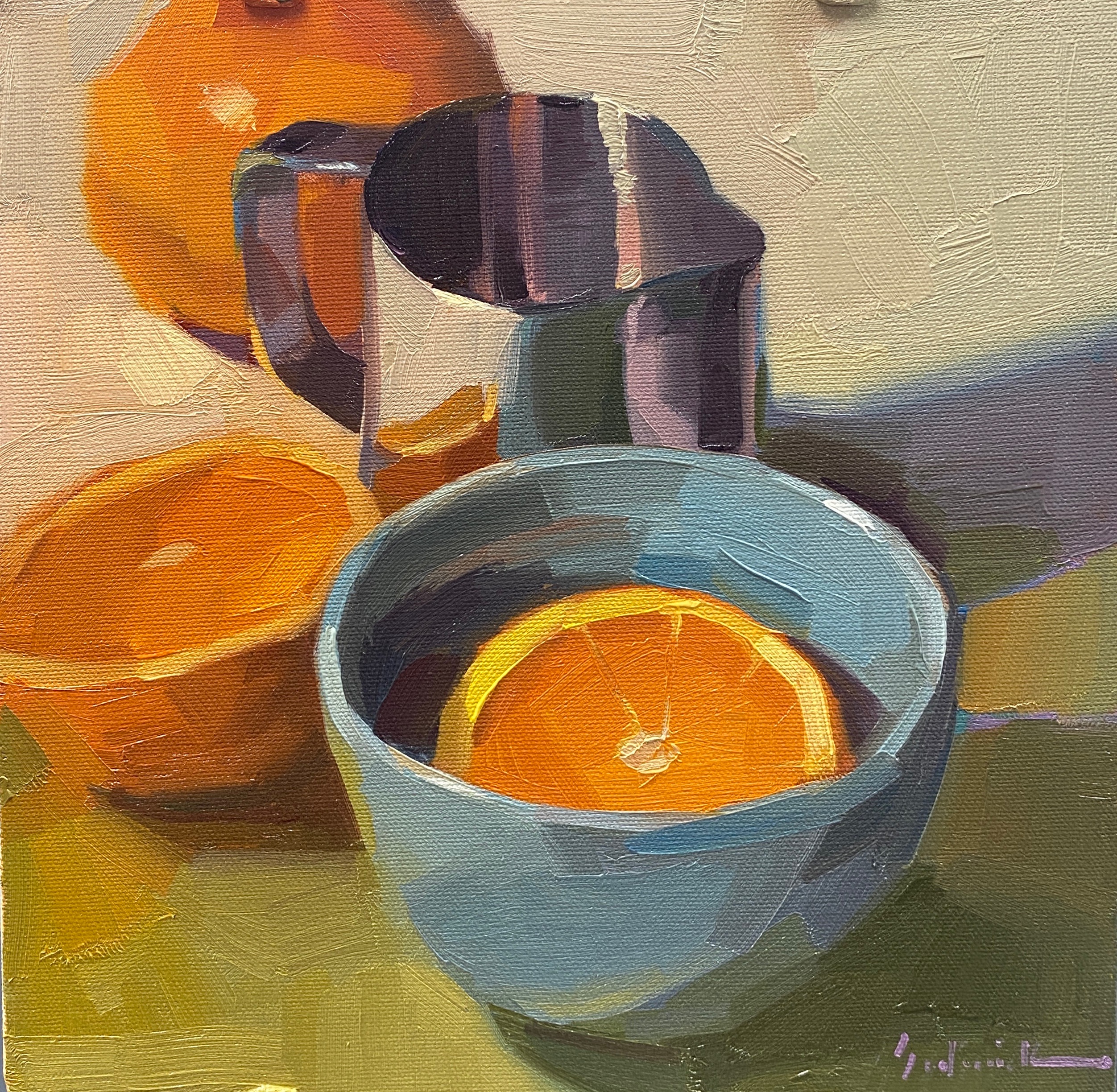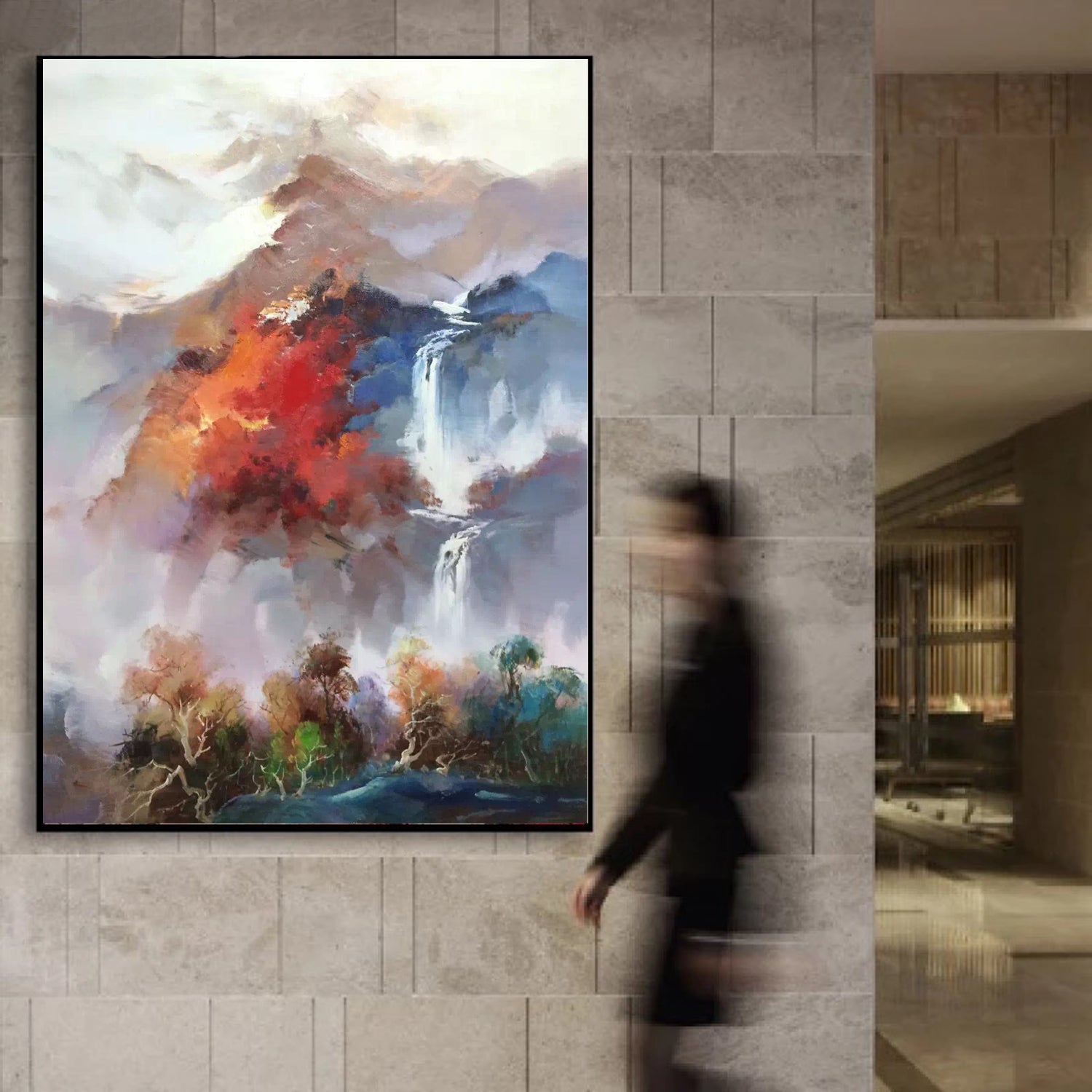The Benefits of Acquiring Oil Paints: Why They Are a Timeless Financial investment
The advantages of acquiring oil paintings extend past mere aesthetic appeals. These artworks lug historic relevance and cultural value, making them rewarding enhancements to any type of collection. Their unique structures and methods add to an interesting visual experience. Established musicians often see their job value over time, providing a possible monetary benefit. As one discovers the diverse factors for spending in oil paintings, the deeper effects of such an option become increasingly evident
The Visual Appeal of Oil Paintings
The appeal of oil paintings lies in their vibrant shades and abundant structures, which can transform any type of area into a fascinating setting. These art work possess a depth that captivates viewers, attracting them into the details of the brushstrokes and the interaction of light and darkness. The shiny surface of oil paint improves the visual experience, providing life to scenes and subjects in a manner that tools frequently can not accomplish. In addition, the variety of styles-- from classical to modern-- permits for a varied choice that can complement any type of décor. The psychological vibration conveyed with shade choices and methods includes a layer of link between the art work and the onlooker, making oil paintings not simply decorative items, but powerful expressions of creative vision.
Historic Relevance and Social Worth
Oil paints offer as important web links to an artistic heritage, showcasing strategies and styles that have actually advanced over centuries. They envelop social expressions and identities, reflecting the worths and narratives of their time. By acquiring these jobs, people contribute to the preservation of background and the admiration of diverse cultural legacies.
Artistic Heritage Conservation
While numerous might forget the importance of artistic heritage, purchasing oil paintings plays a necessary function in preserving cultural and historical narratives. These art work offer as visual paperwork of their time, capturing the significance of social worths, practices, and historic occasions. By obtaining oil paintings, collection agencies contribute to the safeguarding of cultural traditions, guaranteeing that future generations can learn and appreciate from these creative expressions. Each item mirrors the unique tale of its developer and the context in which it was made. Additionally, the continued appreciation and screen of oil paints in various setups help to cultivate an understanding of varied creative movements, enriching the social landscape. Spending in oil paints is not merely a monetary choice but an act of cultural stewardship.
Cultural Expression and Identification
Art acts as a powerful tool for social expression and identity, showing the varied stories that form societies. Oil paints, particularly, capture the significance of social heritage, highlighting historic contexts and sociopolitical climates. Each brushstroke conveys tales and emotions special to specific practices, permitting customers to engage with the musician's cultural history. This connection promotes a sense of belonging and understanding among various neighborhoods. Furthermore, oil paintings commonly offer as aesthetic documents of social evolution, showcasing shifts in identification with time. The financial investment in these artworks not only supports artists but likewise maintains social legacies, making them significant possessions for enthusiasts. Ultimately, oil paints enhance one's admiration for the details of human experience and the abundant tapestry of cultural identification.
Gratitude in Worth Gradually

The appreciation of oil paintings with time is affected by different variables, including historic value trends that reflect altering tastes and cultural value. Additionally, the credibility of the musician plays an important role in establishing the art work's market worth, commonly raising as the artist gains acknowledgment. Market demand changes can additionally impact costs, making oil paints a possibly profitable investment for collection agencies.
Historical Worth Patterns
As enthusiasts seek to invest in tangible possessions, the historical value trends of oil paintings disclose an engaging narrative of admiration over time. Historically, oil paints have actually shown a constant upward trajectory in value, especially for works by recognized artists. Economic cycles and market demand have actually influenced these fads, with periods of raised passion typically resulting in considerable price surges. Auction records frequently highlight the impressive returns attained by famous pieces, even more reinforcing the concept of oil paintings as viable lasting financial investments. Furthermore, social activities and shifts in enthusiast choices have periodically stimulated unexpected appreciation, disclosing that the art market, while rather uncertain, generally prefers high quality oil paintings. Recognizing these historical patterns can assist financiers in making educated decisions.
Musician Online Reputation Impact
While the reputation of a musician plays a crucial function in the recognition of oil paintings, it is crucial to recognize that this impact can differ substantially based upon several variables. Established musicians, particularly those with a significant historical or social impact, have a tendency to see their works appreciate much more quickly. Conversely, lesser-known or emerging musicians might not experience the exact same level of need, impacting their art work's value. In addition, the artist's capability to develop a consistent body of job and maintain relevance in the art world can affect long-term admiration. Collectors commonly look for jobs from musicians who are acknowledged by credible galleries and institutions, which can even more enhance the value of an oil painting gradually, making musician track record an important factor to consider in financial investment choices.

Market Need Fluctuations
Just how do market need fluctuations influence the admiration of oil paintings gradually? The value of oil paintings is fundamentally linked to market need, which can differ based on economic conditions, patterns, and collectors' preferences. In times of economic prosperity, need typically climbs, resulting in boosted rates as more buyers go into the market. On the other hand, during financial recessions, demand may dwindle, triggering values to stagnate or also decrease. Furthermore, the appeal of particular musicians can move, impacting their work's value. Ultimately, recognizing market need is vital for financiers, as well-managed collections can appreciate substantially in time, showing both the skill of the musician and the broader market dynamics. This interaction underscores the significance of critical purchasing in oil painting investments.
Special Appearances and Methods
Oil paintings mesmerize customers with their distinctive appearances and strategies, showcasing the artist's proficiency over the medium. The thick application of paint, known as impasto, creates a three-dimensional impact, welcoming touch and enhancing aesthetic deepness. Artists frequently utilize various brush strokes, layering, and polishing techniques to accomplish intricate information and luminous colors. This convenience permits abundant contrasts and refined changes, making each artwork distinctly meaningful. Moreover, the sluggish drying time of oil paint allows musicians to mix shades perfectly, resulting in smooth slopes and lively tones. These techniques contribute to the painting's total character, making it a compelling centerpiece. Each oil painting functions as an indicator of the creative thinking and ability integral in conventional imaginative practices.
Versatility in Home Design
The distinct textures and methods of oil paintings not just display creative skill but additionally improve their flexibility in home decoration. These artworks can flawlessly match various indoor designs, from contemporary minimal to conventional beauty. Oil paints offer as prime focus, drawing interest and sparking discussion amongst guests. Their abundant shades and deepness can harmonize with different color schemes, making them adaptable to transforming design patterns. Furthermore, the emotional resonance of oil paintings can develop ambiance, whether it be warmth in a comfortable living room or vibrancy in a creative work area. By integrating oil paints, home owners boost their rooms, changing them right into attentively curated settings that show personal taste and imaginative gratitude. Inevitably, oil paintings are a long-lasting option for boosting home aesthetic appeals.
Link to Renowned Artists
While numerous art kinds can evoke affection, purchasing oil paints frequently establishes an unique link to prominent artists throughout history. Possessing an oil painting allows collectors to engage with the creative visions of masters like Van Gogh, Monet, and Rembrandt. Each brushstroke embodies the musician's emotions, techniques, and purposes, using insight right into their globe. This connection goes beyond time, as each piece carries a narrative that reflects the historic and cultural context of its production. Collection agencies not only acquire a work of art yet additionally a piece of the musician's legacy. As art fanatics explore the tales behind these paintings, they obtain a deeper gratitude for the craftsmanship and imaginative motions that formed their advancement, boosting the worth of their financial investment.
Emotional and emotional Advantages of Art
Art often serves as an effective driver for psychological and psychological well-being. The visibility of oil paintings in a space can stimulate a variety of feelings, from peace to inspiration. Their dynamic colors and detailed information supply audiences a retreat, permitting reflection and contemplation. Research studies suggest that engaging with art can decrease stress and anxiousness, cultivating check here a sense of calm. Furthermore, having initial art work can create an individual link, boosting sensations of satisfaction and joy. This psychological bond commonly leads to a deeper admiration of one's surroundings, changing a residence into a home. Eventually, the emotional benefits of art extend past aesthetics, adding to total psychological health and improving life experiences.

Often Asked Concerns
How Do I Select the Right Oil Painting for My Room?
Selecting the right oil paint includes considering the space's color design, dimension, and overall visual. One ought to examine individual preference, the paint's emotional effect, and just how well it matches existing decoration prior to making a choice.

What Elements Impact the Worth of an Oil Painting?
The value of an oil painting is affected by elements such as the musician's reputation, provenance, historic relevance, market, problem, and rarity need. Each component adds to total worth and value among collection agencies.
Just How Can I Treatment for and Maintain My Oil Painting?
To take care of and preserve an oil paint, one must frequently dirt it with a soft towel, stay clear of direct sunlight direct exposure, control moisture degrees, and take into consideration expert cleaning to maintain its vibrancy and integrity.
Are There Certain Musicians Recognized for Their Oil Paints?
Countless musicians are renowned for their oil paintings - oil paintings for sale. Notable numbers include Vincent van Gogh, Claude Monet, and Rembrandt, each commemorated for their distinct methods and contributions to the art globe with vibrant, textured oil mediums
Where Can I Acquisition Authentic Oil Paintings?
Genuine oil paints can be bought from reputable galleries, art fairs, and online platforms concentrating on great art. Collectors should validate the authenticity and provenance prior to buying to ensure a valuable investment. Historically, oil paints have demonstrated a regular higher trajectory in worth, specifically for works by recognized artists. While the credibility of a musician plays an important function in the admiration of oil paints, it is essential to recognize that this effect can differ considerably based on numerous aspects. Oil paintings astound visitors with their distinctive structures and methods, showcasing the musician's proficiency over the tool. While many art forms can stimulate adoration, acquiring oil paintings frequently develops a special connection to distinguished artists throughout history. The value of an oil paint is influenced by variables such as the artist's credibility, provenance, historical importance, condition, rarity, and market need.